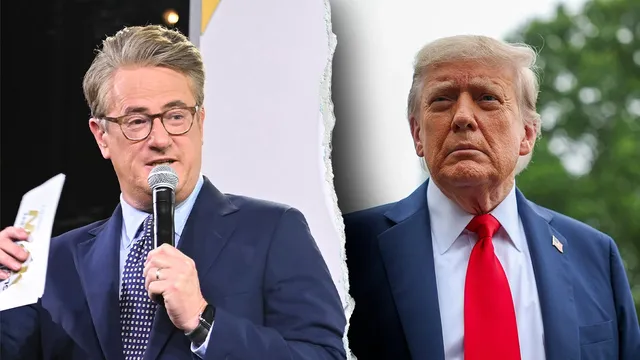
JD Vance justifies Trump's military strikes on Iran despite past skepticism
2025-06-23 18:57- JD Vance attempts to defend Trump's military strikes in Iran amidst widespread skepticism.
- Trump's presidency is contrasted with previous administrations, labeled as less competent.
- The justification provided raises concerns over Trump's track record and the risk of escalating conflict.
Express your sentiment!
Insights
In recent days, the United States engaged in military action against Iran, with Vice President JD Vance attempting to justify the strikes amidst a backdrop of skepticism regarding President Donald Trump's foreign policy decisions. During an appearance on NBC's 'Meet the Press', Vance highlighted the perceived differences between Trump's presidency and those of previous administrations, labeling past leaders as 'dumb' while claiming Trump possesses the intelligence needed for effective national security measures. However, this defense is fraught with contradictions, as Trump's record of erratic policy shifts raises questions about his strategic consistency and ability to maintain stability in the region. The military strikes aim to target Iran's nuclear program, which has been a contentious issue in international relations for years. Tensions escalated after a private threat from Iran to carry out attacks on U.S. soil, prompting concerns over retaliation that could spiral into a larger conflict. Iran’s response was notably aggressive, launching missile strikes on a U.S. military base in Qatar, amplifying fears of a prolonged confrontation. Observers warn that this cycle of aggression risks dragging the U.S. into a sustained war, despite Vance's assurances of a controlled operation. Critics of Vance's stance suggest that trusting Trump's judgment is misguided, considering his history of misinformation and contradictory statements about U.S. policy toward Iran. In the days leading up to the strikes, there was a public push for diplomatic negotiations, which starkly contrasted the military approach chosen by Trump. The situation remains precarious, with calls for clear communication and a coherent strategy amidst a chaotic foreign policy landscape. Ultimately, the administration's contradictory narratives regarding diplomacy and military intervention illustrate the ongoing turmoil within U.S. foreign policy. JD Vance’s attempts to rationalize this latest military incursion not only highlight internal fractures among political leaders but also emphasize the urgent need for a consistent and transparent approach to national security that does not inadvertently elevate tensions with Iran or destabilize the region further.
Contexts
The history of U.S. military strikes in Iran has been marked by a combination of direct and indirect military engagements, political tensions, and intricate geopolitical dynamics. Beginning with the 1953 CIA-backed coup that reinstated the Shah of Iran, relations between the two nations soured, culminating in the 1979 Iranian Revolution and the subsequent hostage crisis. At this juncture, the U.S. began to view Iran through the lens of enmity, particularly as it endeavored to curb Iranian influence in the Middle East. The 1980s saw a series of confrontations, including American involvement in the Iran-Iraq War, where the U.S. provided support to Saddam Hussein in an effort to counter the new Shiite Islamic regime in Tehran. Military strikes during this era included the infamous Operation Praying Mantis in 1988, which targeted Iranian naval assets in response to the mining of the Persian Gulf and attacks on U.S. vessels, marking the largest naval engagement for the U.S. since World War II. In the following decades, U.S.-Iranian tensions continued to escalate, especially highlighted by Iran's nuclear ambitions. Significant military actions occurred in various forms, including targeted airstrikes authorized under the auspices of regional conflicts. The Bush administration's response to the 9/11 attacks in 2001 and subsequent invasions of Afghanistan and Iraq opened a new chapter in which Iran found itself increasingly isolated yet strategically powerful amid the chaos. The U.S. began to focus on countering Iranian influence in Iraq, leading to covert operations and economic sanctions aimed at undermining the Iranian government while bolstering opposition groups. Official military strikes were limited, reflecting a preference for proxy battles as opposed to large-scale engagement. The 2015 Joint Comprehensive Plan of Action (JCPOA) represented a rare diplomatic thaw in the U.S.-Iran relationship, although it was short-lived. The withdrawal of the U.S. from the agreement in 2018 under the Trump administration renewed hostilities and led to a series of military strikes, including the notable drone strike that assassinated IRGC Quds Force commander Qasem Soleimani in early 2020. This escalated fears of direct military confrontation, and Iran retaliated with missile strikes on bases housing U.S. troops in Iraq, signifying a critical turning point in U.S.-Iran relations. The tension kept spiraling, with both nations engaging in cyber warfare and indirect assaults throughout the region. As of 2025, the landscape of U.S. military strikes in Iran reflects a complex interplay of direct action and indirect strategy, underpinned by the broader geopolitical landscape influenced by other regional players. While military action has been limited in recent years owing to global diplomatic efforts, the potential for escalation remains, particularly given ongoing concerns regarding Iran's nuclear capabilities and regional power dynamics. The historical patterns demonstrate a cyclical nature of engagement that is often dictated by immediate political considerations, reflecting the broader implications of U.S. foreign policy and its balancing act with Iranian ambitions.